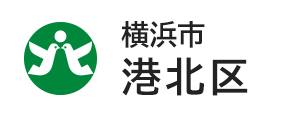- Yokohama-shi Top Page
- Kohoku Ward Top Page
- Living and Procedures
- Community Development and Environment
- Public Works Office
- Sewer
- Sewer-related laws and regulations (reference)
Here's the text.
Sewer-related laws and regulations (reference)
Last Updated January 10, 2019
Article 9 When a public sewer manager intends to start the service of the public sewer, the public sewer manager shall publicly announce the date on which the service should be started, the area where the sewage should be removed, and other matters specified by Ordinance of the Ministry of Land, Infrastructure, Transport and Tourism in advance, and the drawing showing this must be made available for general inspection at the office of the local government that is the public sewer administrator. The same shall apply when attempting to change the published matter.
(2) The provisions of the preceding paragraph shall apply mutatis mutandis to the case where the public sewer manager intends to start the treatment of sewage by the wastewater treatment plant or when the wastewater treatment by the wastewater treatment plant of the basin sewer connected to the public sewer is started. In this case, in the same paragraph, "date on which service should be started" means "date on which sewage treatment should be started", and "area where sewage should be excluded" means "sewage treatment. Areas to be treated" and "Ministry of Land, Infrastructure, Transport and Tourism Ordinance" shall be read as "Ministry of Land, Infrastructure, Transport and Tourism Ordinance / Ministry Ordinance".
Article 10 When the service of the public sewer is started, the owner, user or occupant of the land in the drainage area of the public sewer shall, without delay, submit the sewage of the land to the public sewer according to the following categories. Drain pipes, drains and other drainage facilities (hereinafter referred to as "drainage facilities") necessary to allow them to flow into the sewer must be installed. Provided, however, that this shall not apply when the permission of the public sewer manager is obtained due to special circumstances or when specified by a Cabinet Order.
(I) In the case of land that is the site of a building, the owner of the building concerned
(Ii) In land that is not the site of a building (peek at the land specified in the next item), the owner of the land concerned
(3) On land that is the site of roads (meaning roads under the Road Law (Law No. 180 of 1952)) and other public facilities (peek at buildings), the public facilities should be managed Person
(2) The renovation or repair of the drainage system installed pursuant to the provisions of the preceding paragraph shall be performed by the person who should install it pursuant to the provisions of the same paragraph, and the cleaning and other maintenance shall be performed by the occupant of the land (the land set forth in item 3 of the preceding paragraph). In such cases, the person who should manage the public facilities) shall perform.
(3) With regard to the installation or structure of drainage facilities set forth in paragraph (1), if the Building Standards Law (Act No. 211 of 1950) and other laws and regulations apply, in addition to the provisions of those laws and regulations, Must be based on the standards specified by a Cabinet Order.
Article 11-3 A person who owns a building where a toilet is provided in the treatment area shall be notified pursuant to the provisions of paragraph 1 of the same Article, which is applied mutatis mutandis in Article 9, paragraph 2 of the treatment area. Within three years from the date on which the treatment of sewage should be started, the toilet shall be flush toilets (limited to those in which sewage pipes are connected to public sewers). The same applies below.
2 The provisions of the preceding paragraph shall not apply to owners of buildings that have toilets that violate the provisions of Article 31, Paragraph 1 of the Building Standards Act.
(3) The public sewer manager may order a person who violates the provisions of paragraph (1) to convert the stool to a flush toilet for a considerable period of time. However, if the building is to be removed or relocated soon, or if there is a situation where it is difficult to procure funds necessary for remodeling to a flush toilet, the pumping toilet will be converted to a flush toilet. This shall not apply if it is deemed that there is a reasonable reason for not doing so.
(4) A person who has acquired the ownership of a building pertaining to a violation of the same paragraph after the deadline set forth in paragraph (1) shall be the same as the preceding paragraph.
(5) The municipalities shall mediate settlements with those who intend to convert the toilets into flush toilets in the event of a dispute with those who have an interest in the remodeling, such as the provision of necessary funds or the provision of such funds. And other assistance.
(6) In the event that the municipalities provide the funds set forth in the preceding paragraph, the State shall endeavor to provide or exchange the funds necessary for them.
Article 13 The public sewer manager shall preserve the function and structure of the public sewer or basin sewer, or shall conform the quality of the effluent from the public sewer or the effluent from the basin sewer to the technical standards of Article 8. To the extent necessary to do so, the staff may enter another person's land or building in the drainage area and inspect drainage facilities, specific facilities, abatement facilities and other properties. Provided, however, that when entering a building used for a person's residence, the consent of the resident must be obtained in advance.
(2) Pursuant to the provisions of the preceding paragraph, the staff conducting the inspection must carry a certificate showing his / her identity and present it when requested by a person concerned.
The authority for on-site inspection pursuant to the provisions of paragraph (1) shall not be understood as being granted for criminal investigation.
Article 8 The technical standards prescribed by Cabinet Order as provided for in paragraph (3) of Article 10 of the Act shall be as follows:
(I) Drainage facilities shall be connected to other drainage facilities of public sewers or other drainage facilities according to the regulations of local governments that are public sewerage managers.
(Ii) The drainage system shall be a solid and durable structure.
(Iii) Drainage facilities shall be made of pottery, concrete, brick and other water-resistant materials, and measures shall be taken to minimize water leakage. However, for those that should remove rainwater, it can have a function to infiltrate porous pipes and other rainwater underground.
Drainage facilities provided to allow sewage to flow into a four-divid public sewer system shall have a structure that separates sewage and rainwater and eliminates it.
(Iv) The slope of the sewer shall be at least one hundredth, unless unavoidable.
(Ii) The inner diameter of the drainage pipe and the cross-sectional area of the drainage pipe shall be able to flow down the sewage to be removed without any problems according to the regulations of the local government that is the public sewerage manager.
(Iii) Sewage (excluding water used for cooling and other sewage that is clean at least as much as rainwater. The same shall apply in this article below. ) Shall be culverts. Provided, however, that this shall not apply in buildings provided for the manufacturing industry or gas supply industry.
(Ii) A masu or manhole shall be provided at the places listed next to the structure that is a culvert.
B. At the beginning of the sewer where rainwater should be removed
(B) Where the direction or slope of the sewer channel changes significantly. Provided, however, that this shall not apply when there is no obstacle to cleaning the sewer.
(C) A place appropriate for cleaning the sewer within a range where the length of the sewer does not exceed 120 times the inner diameter or inner laver width.
(9) Provide a lid (a lid that can remove sewage or, for manholes, a lid that can be sealed) in the masu or manhole.
At the bottom of the ten masu, the depth should be more than 15 centimeters for the removal of rainwater, and for other masu, the inner diameter or inner slope of the connecting sewer shall be provided. Provide a considerable width invert according to the width.
Measures must be taken to prevent the emission of odors from affecting the living environment in conservation.
Yokohama City Sewerage Ordinance
Article 4 A person who intends to establish a new drainage system, etc. shall confirm in advance that the plan conforms to the laws and regulations on the installation and structure of the drainage system and the provisions of these ordinances, as provided for in the rules. You must submit an application and receive confirmation from the mayor. The same shall apply when attempting to change the matters that have been confirmed.
Person who performed new construction of Article 5 drainage facilities must notify the mayor within five days from day when the construction was completed according to rule.
Article 15 A person who owns a building with a human waste septic tank in the treatment area shall have a sewage published pursuant to the provisions of Article 1, Paragraph 1, which is applied mutatis mutandis in Article 9, Paragraph 2 of the Act on the treatment area. Within three years from the date of commencement of treatment, the human waste septic tank must be abolished so that human waste can be discharged directly to public sewers.
(2) The mayor may order those who violate the provisions of the preceding paragraph to establish a considerable period of time and abolish the human waste septic tank so that human waste can be discharged directly to the public sewer. However, if the building is to be removed or relocated soon, or if there is a situation where it is difficult to procure the funds necessary to abolish the human waste septic tank, the human waste septic tank will be abolished and human waste will be removed. This shall not apply if it is deemed that there is a reasonable reason for not being able to be directly discharged to the public sewer.
3 A person who has acquired the ownership of a building pertaining to a violation of the same paragraph after the deadline set forth in paragraph 1 shall be the same as the preceding paragraph.
4 The provisions of Paragraph 3 of the preceding Article shall apply mutatis mutandis to the abolition of the human waste septic tank so that human waste can be discharged directly to the public sewer.
Yokohama City flush toilet facility fund subsidy and loan rules
Article 9 A person who has received a decision to grant a grant pursuant to the provisions of the preceding Article (hereinafter referred to as “subsidy decision person”) After completion of flush toilet remodeling construction or human waste septic tank abolition construction, it must be inspected that the mayor performs immediately.
Article 11-2 When the septic tank manager abolishes the use of the septic tank, he / she must notify the prefectural governor within thirty days from that date, pursuant to the provisions of the Ordinance of the Ministry of the Environment.

"Dobokuneko" character from Kohoku Public Works Office
Inquiries to this page
Kohoku Ward Port North Public Works Office
Telephone: 045-531-7361
Telephone: 045-531-7361
Fax: 045-531-9699
Email address: ko-doboku@city.yokohama.lg.jp
Page ID: 551-314-581













